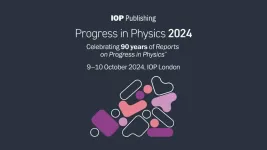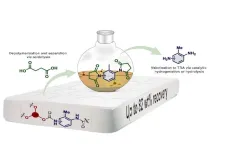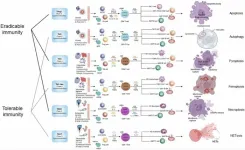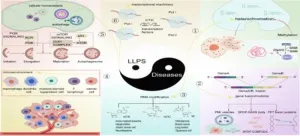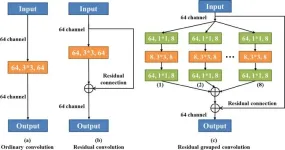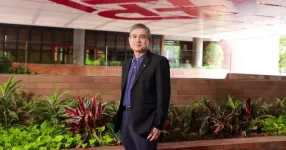(Press-News.org) New research from Smithsonian’s Bird Friendly Coffee program highlights a type of biodiversity that often gets overlooked: soil bacteria and fungal communities. For over twenty years, Smithsonian research has shown that coffee farms with shade trees protect more biodiversity than intensified, monoculture coffee farms. The new research, published today in Applied Soil Ecology, shows that soil bacteria and fungi on coffee farms also respond to the intensity of coffee farm management. To conduct this research, the team collected soils samples on coffee farms in Colombia, El Salvador, and Peru and used DNA analysis to profile bacterial and fungal soil on farms with different management regimes. They found that farming coffee as a monoculture alters the soil microbiome in both community composition and species diversity. But not all shade-grown coffee farms were the same. The soil microbiomes on farms with native shade trees was different than on farms with non-native, introduced species of shade trees as well. Soil microbiomes in the tropics are poorly understood, and this research demonstrates the incredible diversity within soils in tropical agricultural landscapes across Latin America. This research also furthers our understanding of how coffee farm management decisions impact that entire agricultural ecosystem, which in turn impacts the production of coffee and the livelihoods that depend on it. As biodiversity is declining globally at an alarming rate, agricultural landscapes can play an important role in conserving unique species and ecological processes that enable agriculture to thrive.
END
New research shows agricultural impacts on soil microbiome and fungal communities
2024-08-16
ELSE PRESS RELEASES FROM THIS DATE:
Tracking down the asteroid that sealed the fate of the dinosaurs
2024-08-16
Geoscientists from the University of Cologne have led an international study to determine the origin of the huge piece of rock that hit the Earth around 66 million years ago and permanently changed the climate. The scientists analysed samples of the rock layer that marks the boundary between the Cretaceous and Paleogene periods. This period also saw the last major mass extinction event on Earth, in which around 70 percent of all animal species became extinct. The results of the study published in Science indicate that the asteroid formed outside Jupiter’s orbit during the ...
IOP Publishing hosts Progress In Physics 2024 – a two-day hybrid conference focused on condensed matter physics
2024-08-16
The Institute of Physics and IOP Publishing (IOPP) are launching Progress In Physics 2024, a two-day hybrid workshop hosted at the Institute of Physics’ office in London from 9-10 October 2024. The event will cover topics on condensed matter and will bring together leading physics researchers to exchange knowledge in both an in-person and online format.
Progress in Physics 2024 aligns with the mission of IOPP’s new Progress In seriesTM of journals. The series builds on the success of IOPP’s flagship journal Reports on Progress in PhysicsTM which celebrates its 90th anniversary this year.
With ...
Researchers discover smarter way to recycle polyurethane
2024-08-16
Researchers discover smarter way to recycle polyurethane
Researchers at Aarhus University have found a better method to recycle polyurethane foam from items like mattresses. This is great news for the budding industry that aims to chemically recover the original components of the material – making their products cheaper and better.
Polyurethane (PUR) is an indispensable plastic material used in mattresses, insulation in refrigerators and buildings, shoes, cars, airplanes, wind turbine blades, cables, and much more. It could be called a wonder material if it weren’t also an environmental ...
Right on schedule: Physicists use modeling to forecast a black hole's feeding patterns with precision
2024-08-16
Powerful telescopes like NASA’s Hubble, James Webb, and Chandra X-ray Observatory provide scientists a window into deep space to probe the physics of black holes. While one might wonder how you can “see” a black hole, which famously absorbs all light, this is made possible by tidal disruption events (TDEs) - where a star is destroyed by a supermassive black hole and can fuel a “luminous accretion flare.” With luminosities thousands of billions of times brighter than the Sun, accretion events enable astrophysicists to study supermassive black holes (SMBHs) at cosmological distances.
TDEs occur when a star is violently ripped ...
Cell death types and their relations to host immune pathways
2024-08-16
“We have proposed a framework encompassing all discovered host immunological pathways, such as TH1, TH2a, TH2b, TH3, TH9, TH17, TH22, TH1-like, and THαβ immune reactions”
BUFFALO, NY- August 16, 2024 – A new review was published as the cover paper of Aging (listed by MEDLINE/PubMed as "Aging (Albany NY)" and "Aging-US" by Web of Science), Volume 16, Issue 15, entitled, “Types of cell death and their relations to host immunological pathways”.
Various ...
Perceived parental distraction by technology and mental health among emerging adolescents
2024-08-16
About The Study: In a cohort study of 1,300 emerging adolescents ages 9 to 11 across three assessments, higher levels of anxiety symptoms were associated with higher levels of perceived parental technoference later in development. Higher levels of perceived parental technoference were associated with higher levels of inattention and hyperactivity symptoms later in development. The findings of this study speak to the need to discuss digital technology use and mental health with parents and emerging adolescents as a part of routine care.
Corresponding Author: To contact ...
Liquid-liquid phase separation in diseases
2024-08-16
This paper, led by Professor Wu (Wenzhou Institute University, Wenzhou Medical University) and Professor Huang (Northeastern University), explores LLPS, a phenomenon closely associated with various diseases, including cancer and neurodegenerative disorders. As a frontier research area, LLPS plays a significant role in cancer through its regulation of multiple facets, including signaling pathways, gene expression, and tumor microenvironment. Dysregulation of LLPS leads to the formation of various aggregates, such as amyloid proteins, suggesting that modulating LLPS in ...
Advanced U-net segmentation model using residual grouped convolution and attention mechanism for brain tumor MRI image segmentation
2024-08-16
The brain is responsible for the "general command" of human thinking and coordination of the body. Thus, various brain diseases can cause great damage to the human body and nervous system. Brain tumors are caused by abnormal cells that grow and multiply irregularly within the brain. Glioma is one of the most common malignant tumors in adults. It originates from glial cells and the surrounding infiltrating tissue, compresses other normal tissues in the brain during the growth process, and blurs the boundary of the tumor. ...
PolyU develops versatile fluidic platform for programmable liquid processing
2024-08-16
Society relies heavily on diverse fluidic technologies. The ability toprecisely capture and release various chemical and biological fluids plays a fundamental role in many fields.A long-standing challenge is to design a platform that enables the switchable capture and release of liquids with precise spatial and temporal control and accurate volumes of the fluid. Recently, researchers at The Polytechnic University of Hong Kong (PolyU) have invented a new method to effectively overcome this challenge.
Led by Prof. WANG Liqiu, Otto Poon Charitable Foundation Professor in Smart and Sustainable Energy, Chair ...
MIT engineers design tiny batteries for powering cell-sized robots
2024-08-16
A tiny battery designed by MIT engineers could enable the deployment of cell-sized, autonomous robots for drug delivery within in the human body, as well as other applications such as locating leaks in gas pipelines.
The new battery, which is 0.1 millimeters long and 0.002 millimeters thick — roughly the thickness of a human hair — can capture oxygen from air and use it to oxidize zinc, creating a current of up to 1 volt. That is enough to power a small circuit, sensor, or actuator, the researchers showed.
“We think this is going to be very enabling ...


